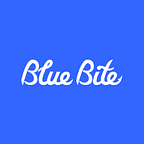Three types of content to engage customers
Every morning, my eyes scan the barrage of messages that has flooded my inbox since I last turned on my computer. More often than not, I click the “delete all” box, erasing in an instant, all of the branded content sent to me, without having opened a single email.
—
Today, with the rise of social media, businesses are able to produce content at astonishing rates. To illustrate: on average, 6,000 tweets are done per second, equaling 350,000 per minute, or 500 million tweets per day. While it took Twitter 3 years to get to its billionth tweet, it now takes less than 2 days for 1 billion tweets to be sent. Included are tweets from companies, 92% of which tweet more than once a day. [1]
Georg Simmel, in his essay The Metropolis and Mental Life, describes a phenomena of living in major cities where the constant deluge of sounds, sights, and people encountered on a daily basis desensitizes individuals to their surrounding environment. In other words, individuals in metropolitan areas stay unengaged with their surroundings, focused on getting from point A to B without deviation.
The same phenomenon is faced by today’s consumers in a sea of retailers, brands, and companies. The overproduction of content has created a cluttered web of information that has left consumers wondering what is worth their time.
It is unfair to conclude that all content distributed by brands will be disregarded by consumers. To demonstrate where content is and can be successful, the examples below dive into three different types of engaging content: dynamic content, relevant content, and user generated content, and why they work.
Dynamic content. Dynamic content refers to content that changes as a consumer interacts with a brand. It’s content that learns about the specific user, and delivers content based on usage as well as other logic, such as a location and time. For example, Spyder, a ski apparel company, released an NFC enabled ski jacket that provides users with nearby ski trails, weather conditions, and live social media updates — all which change based on location and time of the user engagement. The dynamic nature of the content influences users to continuously interact with the garment to receive personalized content, developing a more intuitive relationship between the brand and user.
Relevant content. Relevant content refers to content that is useful and applicable to the individual consuming it. Oftentimes, companies generate content that they think is relevant and mainstream, but unless it’s already on consumers’ radar, it will not persuade them to engage. Similar to dynamic content, relevant content means providing consumers information based on their past history, geography, current interests along with other similar factors. Employing relevant content indicates to a consumer that a brand is attuned to their specific needs, and not only the needs of a broader demographic. It fosters a greater connection between company and consumer because it signals that the brand “gets me”.
User Generated Content. User generated content (UGC), can be extremely powerful when employed by brands. One of the most widespread type of UGC is reviews. Consumers are highly influenced by other’s opinions and experiences. Reviews can often influence consumers to buy into a brand or product, or continue their search elsewhere. Providing consumers the ability to rate or review a company’s service or product empowers them to feel that they are impacting a brand or product in a meaningful way.
Content can be a double edged sword. On one hand, too much content will disengage consumers with the bombardment of information from a variety of channels. On the other, content can be the right lure to hook a customer’s attention.
To answer the original question, What content is worth a consumer’s time? The answer is to create, utilize and distribute content that is continuously engaging and relevant to a customer, to prevent regrets on wasted time on irrelevant content.
It is the kind of content that will prompt a new question: What will they come up with next?
